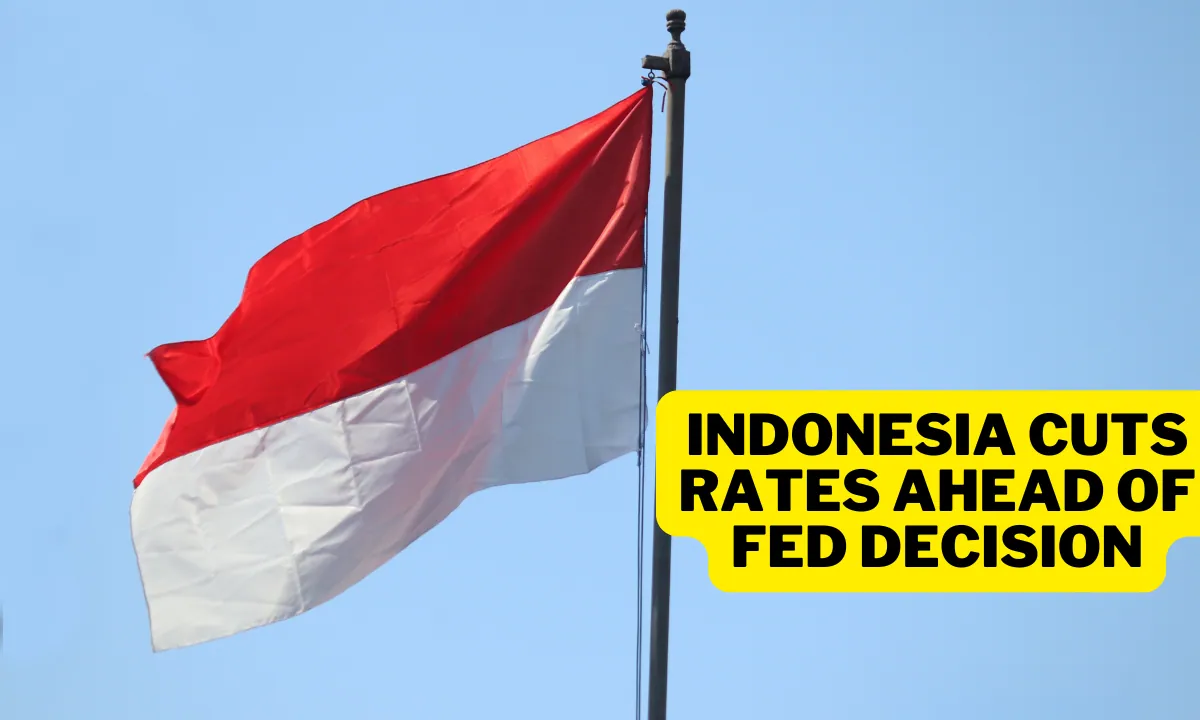Indonesia’s central bank delivered an unexpected policy shift by cutting its key interest rate for the first time in over three years.
This move, which defies its previous guidance, comes ahead of an anticipated pivot by the U.S. Federal Reserve.
To support the economy, Bank Indonesia (BI) lowered the BI-Rate by 25 basis points to 6%, marking a significant step in its monetary policy.
Central Bank of Indonesia Cuts Rates in Over Three Years
In a surprise decision, Bank Indonesia cut the BI-Rate to 6%, a move that only 10 out of 36 analysts had predicted in a Bloomberg News survey, with the majority expecting the rate to remain unchanged.
This decision comes after Governor Perry Warjiyo indicated last month that any rate cuts would likely take place in the fourth quarter, following the U.S. Federal Reserve’s expected rate cuts.
Warjiyo emphasized the timeliness of the decision during a press briefing in Jakarta:
“The time is right. We have room to help Southeast Asia’s largest economy achieve higher growth.”
Strength of the Rupiah Creates Room for Action
Indonesia’s currency, the rupiah, has strengthened significantly in recent months, rallying almost 7% this quarter. It is now trading close to its strongest level against the U.S. dollar in a year.
This currency appreciation has provided Bank Indonesia with the space to cut rates earlier than anticipated, especially as expectations mount that the Federal Reserve will begin cutting rates this year, reducing pressure on emerging market currencies like the rupiah.
According to Governor Warjiyo, the central bank expects the Fed to implement three 25-basis point cuts this year, followed by four more in 2025.
This anticipated loosening of U.S. monetary policy would lead to a weaker dollar and increased capital inflows into emerging markets like Indonesia.
Shift Toward a Pro-Growth Policy Stance
With the rate cut, Bank Indonesia has pivoted from its “pro-stability” stance, which focused on supporting the rupiah, to a more balanced approach between stability and growth. Warjiyo explained the reasoning behind the shift:
“Going forward, Bank Indonesia will continue to keep an eye on the room for lowering the policy rate in line with the low inflation forecast, the stable and appreciating rupiah, and the need to boost economic growth.”
Tight financial conditions, following 275 basis points of rate hikes in the past two years, have started to weigh on the economy.
Indicators such as consumer sentiment, employment, and manufacturing activity have softened, signaling the need for more accommodative monetary policy.
Inflation and Currency Stability Provide Leeway
Indonesia’s inflation rate has cooled within the central bank’s target range of 1.5% to 3.5%, providing more room for policy easing.
Furthermore, the rupiah has been bolstered by strong foreign exchange reserves and a narrow current account deficit, which has reassured investors about the currency’s stability.
Bank Indonesia’s key mandate remains to ensure currency stability, and Warjiyo expects the rupiah to strengthen further due to Indonesia’s favorable asset yields, low inflation, and robust economic growth.
The central bank plans to maintain its strategy of optimizing monetary instruments, such as rupiah- and dollar-denominated securities, to attract foreign capital inflows.
Implications for Economic Growth and the Incoming Government
The rate cut aligns with Indonesia’s goal of accelerating economic growth, which has remained resilient but needs further support.
Warjiyo noted that the country’s gross domestic product (GDP) growth is expected to remain in the range of 4.7%-5.5% for 2024, but the central bank is committed to pushing growth even higher.
Lower interest rates will also help boost credit expansion and support government financing. In August, loan growth slowed to 11.4% year-on-year, the slowest pace in six months.
By making credit more accessible, the central bank aims to stimulate both demand and supply-side economic activity.
A more pro-growth policy stance will also benefit incoming president Prabowo Subianto’s administration, which has set ambitious economic targets.
Prabowo aims to increase GDP growth to as much as 8% during his term. Warjiyo expressed confidence that growth could exceed the 5.2% forecast for 2025.
Global Monetary Environment and Indonesia’s Position
Indonesia’s decision to cut rates ahead of the Fed’s expected policy easing reflects the central bank’s confidence in global financial conditions becoming more favorable. Euben Paracuelles, an economist at Nomura Holdings Inc. in Singapore, noted:
“BI didn’t have to wait for the Fed, which speaks to greater confidence that the external environment is clearly turning more supportive of sustained IDR stability.”
The central bank is expected to continue monitoring the global monetary landscape closely. A weaker dollar and improving portfolio flows into emerging markets will provide additional support for the rupiah, allowing Bank Indonesia to maintain a gradual easing cycle without risking currency volatility.
Conclusion
Indonesia’s quarter-point rate cut marks a pivotal moment in its monetary policy. By acting ahead of the Federal Reserve’s anticipated rate cuts, Bank Indonesia has signaled its confidence in the country’s economic fundamentals and the global financial environment.
With inflation well within target, the rupiah stable, and the need for pro-growth policies clear, Bank Indonesia is poised to continue supporting Southeast Asia’s largest economy through further rate cuts if needed.
As Indonesia seeks to boost economic growth and maintain currency stability, this shift in policy will likely benefit both domestic businesses and foreign investors, positioning the country for stronger performance in the coming years.
